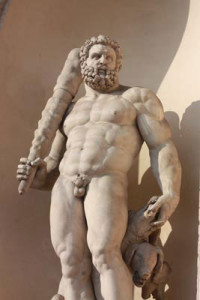by Marcelo Pinto June 18th 2012
Modena Italy is known all over the world, for its fine wine, excellent dining, and being one of the wealthiest and progressive advanced cities in Italy. There are over forty-eight miles of bicycling roads, sixteen movie theaters and twenty-five vast libraries that have survived the online revolution which are just a few of the points that make Modena Italy a travelers hotspot.
In this article you will learn what makes Modena Italy so enticing— in easy to read digestible chucks. And learn why it is truly the Ultimate Leisure Travel Destination.
Top 5 places to see in Modena
1. Modena Cathedral
The Modena Cathedral is one of the main attractions of Modena Italy. The Modena Cathedral is one of the few remaining Romanesque church in Europe. It was created in year 1184 and is consecrated in one of the most recognized Romanesque creations in the world. Modena Cathedral’s patron saint Geminianus’s remains can be found in the cathedral’s crypt.
2. Ghirlandina Tower
The Ghirlandina Tower also referred to as the Torre Della Ghirlandina is the famous bell tower of the Cathedral of Modena. The Ghirlandina Tower stands at an impressive 86/12 meters tall and is the long standing symbol of Modena. The Ghirlandina tower is able to be seen from every direction from the city.
The tower was created in 1179, and is decorated with two ghirlande railings (marble), which is where it obtained its famous name.
3. Ducal Palace
The Ducal Palace in Modena is a Baroque style palace in Italy that is definitely worth seeing for its impressive size alone. It was the residence of the “Este Dukes” of Modena Italy from 1452 all the way to 1859. Its current use is housing a large portion of the current Italian Military Academy. Ducal Palace also contains the official Military Museum, a historic Library and various military ceremonies in its ‘Honor Court’.
4. Military Academy
The Military Academy also called the Accademia Militare is a military university in Modena. It is located in northern Italy in the Palazzo Ducale. The Military Academy is one of the most impressive and historic centers of the city. The Accademia Militare of Modena was the first military institution in the world even before the U.S. Military academy’s creation.
The Accademia Militare allows both sexes to enroll each year. The Accademia Militare focuses mostly on training and selecting future military officers in the Italian Army. The Accademia Militare takes at least two years to complete.
5. The Land of Engines.
Modena Italy is also known as the land of engines. Many of the most famous luxury car manufacturers in the world such as Ferrari, Masertati, Lamborghni and even Pagani call Modena Italy their home.
Top 3 foods you must try in Modena Italy:
1. Tortellini
Tortellini are circle-shaped pasta creations that taste delicious when cooked properly. They are usually filled with a mix of meat prosciutto and cheese. Tortellini is originally from Modena Italy and is served in tasty broth of either beef or chicken. While due to popularity tortellini can now be found all over the world many locals will tell you that the best Tortellini can only be found in its birth place of Modena Italy.
2. Traditional balsamic vinegar
Traditional Balsamic Vinegar is a special type of vinegar produced only in the Emilia Romagna region of Italy. Traditional Balsamic Vinegar is created from cooked grape must. However, what makes it so impressive is that it is always aged at least 12 years. This special vinegar is added to a multitude of Italian dishes and has a taste like no other.
3. Parmesan Cheese
Parmesan cheese is the name of a few special kinds of Italian hard cheese and usually goes with various types of pastas. While many cheeses claim to be Parmesan cheese only one “brand” of parmesan cheese is considered official and regulated as a protected class. Only Parmigianino Reggiano is protected and it is especially delicious.
Modena Italy is a wonderful place and hopefully this article has uncovered at least a 10th of the amazing experiences that Modena Italy has to offer.



